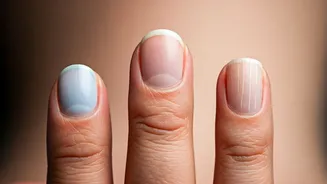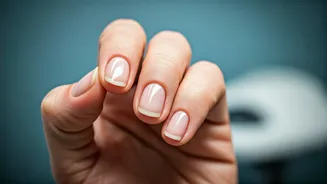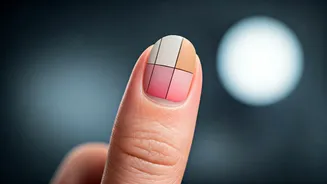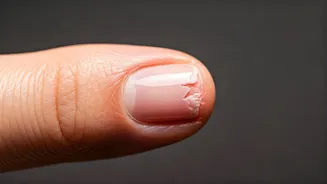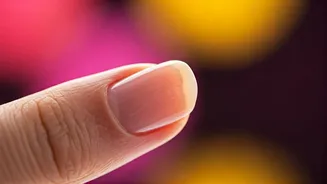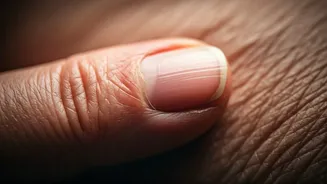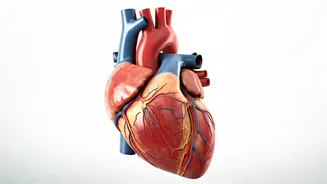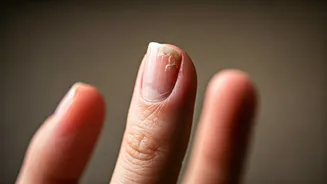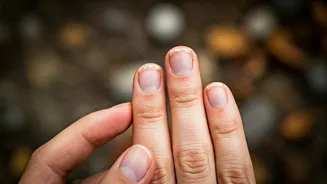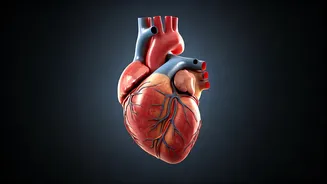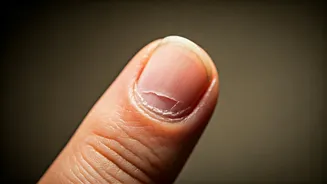Blue Nails: What's Wrong?
The color of your nails can provide key insights into your health, with blue nails being a particularly notable warning sign. A bluish tinge, also known
as cyanosis, signals a possible lack of oxygen in the blood. This condition might stem from several causes, including lung or heart problems, which can hamper the efficient circulation of oxygen-rich blood. Exposure to cold temperatures may also trigger blue nails, causing blood vessels to constrict and decrease blood flow to the extremities. Serious cases might lead to the lips and skin also taking on a bluish hue. This condition often warrants medical attention to pinpoint and treat the root cause.
Yellow Nails: Potential Issues
If you notice your nails turning yellow, it could be a sign of a fungal infection, which is a common cause. This infection often leads to thickened and brittle nails as well. In more serious instances, yellow nails can be linked to conditions such as psoriasis or thyroid issues, where changes in nail color are a visible symptom. In rarer scenarios, yellowing could indicate more serious conditions, like lung disease or even diabetes. Furthermore, the use of certain nail polish products can also contribute to discoloration, but such cases typically lack the other related signs of illness. Consulting a healthcare provider can help determine the underlying cause and ensure prompt treatment.
Clubbed Nails: A Warning
Clubbed nails, which have a rounded, bulbous appearance, often develop slowly over time. This change in shape can be a signal of chronic low oxygen levels in the blood, frequently associated with lung diseases such as COPD, chronic bronchitis, or even lung cancer. The development of clubbed nails is often a gradual process. Clubbing can also be related to heart conditions or certain infections. In these instances, the nails appear enlarged and curved. It's imperative to consult with a medical professional to have this condition evaluated and get proper diagnosis and treatment.
White Lines: Look Closer
The appearance of white lines on your nails can point towards several possible health issues, depending on their pattern and nature. Horizontal white lines, also known as Mees' lines, may be triggered by conditions such as arsenic poisoning or other types of systemic illnesses. On the other hand, vertical white lines are generally less concerning and are often a natural part of the aging process. These may indicate minor trauma or could be a sign of a nutritional deficiency. It is essential to consult with your doctor if these lines are accompanied by other symptoms. Determining the underlying cause involves proper diagnosis and treatment.
White Nails: Seek Advice
Completely white nails can signal more significant health issues. These might be linked to liver problems like cirrhosis, where the liver's ability to function is compromised, affecting nail appearance. The condition may cause the nails to turn white except for a narrow pink band at the tip. Furthermore, completely white nails may be connected to kidney issues or heart failure. Such widespread whiteness of the nails often accompanies other concerning symptoms, highlighting the need for a thorough medical evaluation. Always consult a healthcare provider for any unusual nail changes or color alterations.
Don't Ignore Nail Changes
Paying attention to your nails is a simple, yet important part of keeping an eye on your overall health. Any significant changes in color, shape, or texture should not be ignored. Regularly examine your nails for any of the six signs described: blue, yellow, clubbed, white lines, or completely white nails. If you observe these symptoms, consult your doctor. Early detection and diagnosis of health issues make treatments more effective. Therefore, make it a habit to look at your nails when you are doing your regular check-ups.
